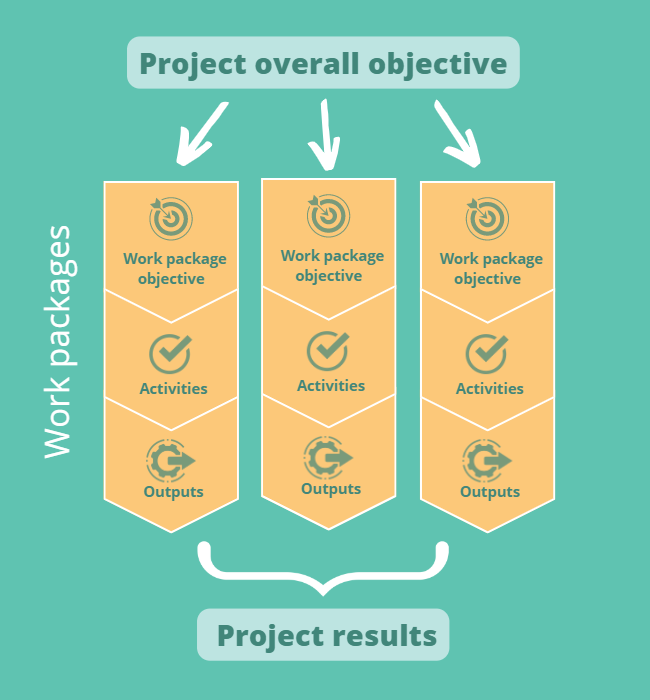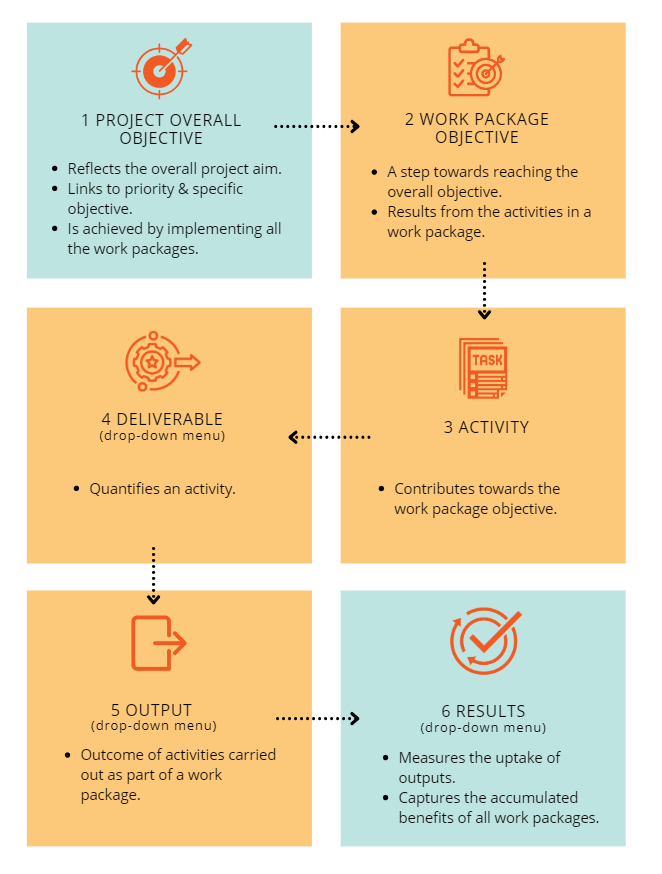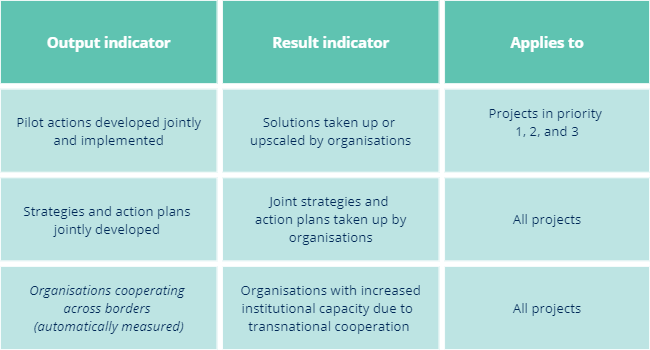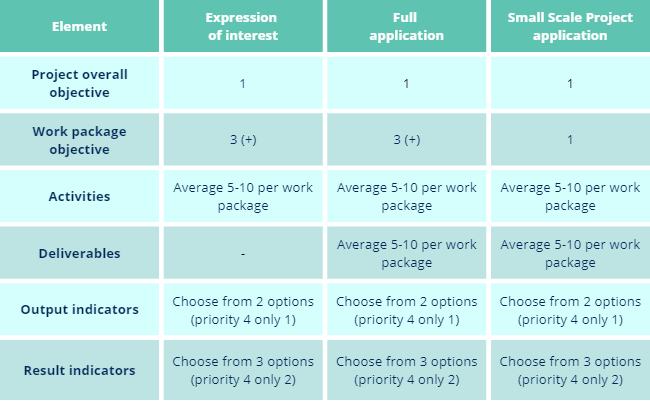Intervention logic and indicators
Understand the basic structure used in Interreg North Sea applications and project reporting.
A clear intervention logic is key to a successful project application.
The intervention logic is the common thread running through a project application, from the project overall objective all the way to the project results.

The intervention logic includes six main elements that need to fit logically together. Two of these (1 and 6) belong at project level, while the rest belong at work package level.

You must choose relevant outputs and results from the following set of indicators.

The above output and result indicators are available for all projects, with one exception: Priority 4 projects cannot choose the indicators for pilots and solutions.
The Online Monitoring System automatically calculates the number of organisations cooperating across borders.
When selecting indicators, please make sure to link all parts of the intervention logic in a coherent way. The starting point is always the specific objective (SO1.1 – SO4.1). The specific objective links to all other apects of the intervention logic and also defines which indicators you can select.
You must set targets for the chosen indicators already when you apply; indicator targets are part of all the online application forms: Expression of interest, full application and small-scale project application. Please see the table below.

Projects must monitor their achievements against outputs and results in the indicator reporting module in the Online Monitoring System.
The indicator reporting module is set up in a way that all lead partners, all partners and all sub-partners have access to it and can therefore contribute to reporting on outputs and results.
The indicator reporting module is available at all times and can be accessed whether a reporting round is open or not.
Role of the lead partner
It is the task of the lead partner to go through the entries provided by the partnership. Lead partners can either accept or edit entries created by others. If an entry needs to be deleted, the lead partner must contact the creator of the respective entry.
Outputs ("not achieved" vs. "achieved")
When reporting on either "pilot actions developed jointly and implemented" or "strategies and action plans jointly developed" you will be asked if a certain pilot or strategy/ action plan is "achieved" or "not achieved" (drop-down menu).
When to choose "not achieved"?
Please use "not achieved" when reporting on progress on either a pilot or a strategy/ action plan or if the development/implementation of a pilot/ action plan is not achieved by the end of the project.
When to choose "achieved"?
Only use "achieved" from the drop-down menu when a pilot action is fully developed and implemented or a strategy/ action plans is fully developed. When choosing "achieved" the pilot or strategy/ action plan will be counted as one achieved output in the project activity report. When choosing "achieved" for a pilot, the location of a pilot will be locked in the Online Monitoring System and used for final mapping of pilots. It is expected that the "achieved" status will rather be chosen after some time of project implementation.
Result ("Number of organisations that increased their institutional capacity in the thematic field of the project by actively participating in cooperation activities across borders”)
An organisation with increased institutional capacity and the type(s) of capacity must first be documented in a survey (see annex to Fact Sheet 22) before being reported in the indicator reporting module. Since an organisation can only be counted once per project, regardless of its involvement in multiple activities or types of increased capacity, reporting of the result indicator should be timed accordingly.
To prevent double counting, the Online Monitoring System requires the VAT number of reported organisations, though exceptions apply for those without one.
Survey responses must be retained for five years from 31 December of the final payment year, except for Norwegian partners and those under a State aid scheme, who must keep them for ten years.
When reporting on outputs and results in the indicator reporting module, it’s important to provide evidence to support your achievements.
Projects can submit any evidence showing progress toward the target, as long as the indicator is marked as “not achieved.” However, to mark an indicator as “achieved,” you must meet the specific evidence requirements outlined in Fact Sheet 22, as detailed in this table.
The table provides a list of indicators, references to Fact Sheet 22, and specific evidence requirements for each.
For more information about reporting on indicators in the Online Monitoring System please see the project guidance on indicator reporting here.
Feel free to consult one of our two project advisors dedicated to this topic.




